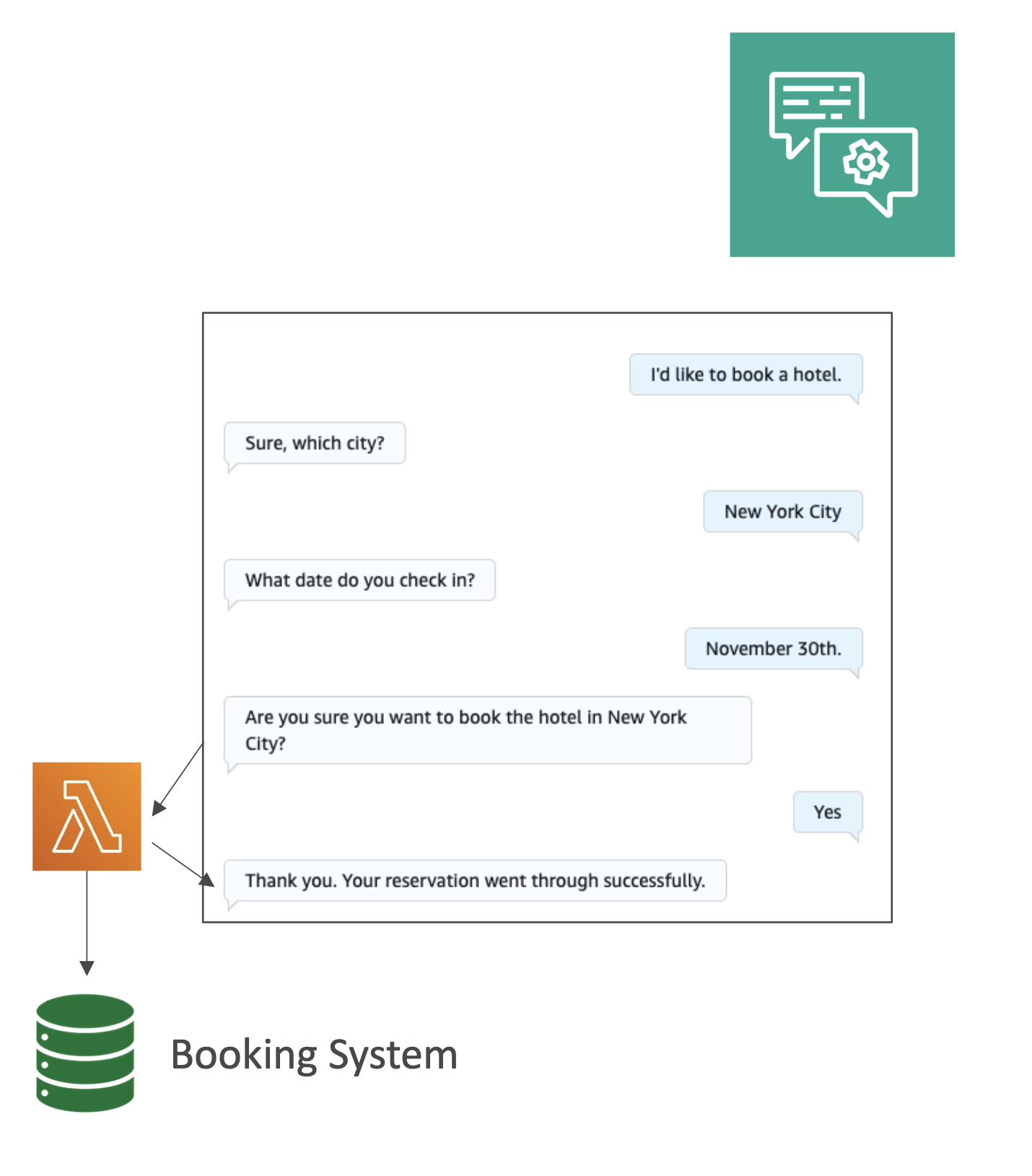AWS Certified AI Practitioner(33) - Lex, Personalize, Textract, Kendra
Amazon Lex
What it is
Amazon Lex lets you build conversational chatbots quickly using voice or text. Think pizza-ordering bots, hotel-booking bots, or customer support assistants. It supports multiple languages and integrates tightly with AWS Lambda, Amazon Connect, Comprehend, and
Kendra.
How it works (simple flow)
- User utterance: “I want to book a hotel.”
- Intent detection: Lex matches this to the BookHotel intent.
- Slot collection: Lex asks for required slots (city, check-in date, nights, room type).
- Fulfillment: When all slots are filled, Lex triggers a Lambda function to complete the action (e.g., create a reservation).
- Response: “Your reservation is confirmed.”
Key terms (exam-ready)
- Intent: What the user wants (e.g., BookHotel).
- Utterances: Example phrases that trigger an intent.
- Slots: Input parameters Lex must collect to fulfill an intent.
- Fulfillment: Often a Lambda function that performs the action.
- Connect integration: Use Lex in contact centers for IVR and agent assist.
- Generative builder (with Bedrock): Option to bootstrap bots using GenAI.
Exam tips - When you see chatbot + intents/slots + Lambda, think Lex.
- For call center/IVR use cases → Lex + Amazon Connect.
- Entity extraction/semantic understanding in the conversation → consider Comprehend with Lex.

Amazon Personalize
What it is
Amazon Personalize is a fully managed ML service for real-time, personalized recommendations (no need to build/train/deploy models yourself). It’s the same tech used on Amazon.com and can be integrated into websites, apps, email, SMS, and more—in days, not months.

Typical use cases
- Personalized product recommendations
- Re-ranking lists for each user
- Targeted campaigns (email/SMS/push)
- Media/content suggestions
Data & integration
- Historical/real-time interaction data via Amazon S3 and Personalize APIs.
- The service exposes real-time inference APIs for your app to call.
Recipes (algorithm templates)
- USER_PERSONALIZATION → User-Personalization-v2: Personalized item recommendations.
- PERSONALIZED_RANKING → Personalized-Ranking-v2: Re-rank a given list for a user.
- POPULAR_ITEMS → Trending-Now, Popularity-Count: Popular or trending content.
- RELATED_ITEMS → Similar-Items: “Because you watched/bought…”.
- PERSONALIZED_ACTIONS → Next-Best-Action: Suggest the next optimal step.
- USER_SEGMENTATION → Item-Affinity: Build user segments by affinity.
Exam tips - “We need recommendations“ → Personalize.
- Recipes are for recommendation use cases (not forecasting).
- Real-time personalization and re-ranking are strong signals for Personalize.
Amazon Textract
What it is
Amazon Textract extracts text, handwriting, and structured data from scanned documents, PDFs, and images—beyond basic OCR. It understands forms (key–value pairs) and tables.

Capabilities
- Text extraction from images/PDFs
- Form extraction: Detects keys/values (e.g., “DOB → 2008-07-18”)
- Table extraction: Preserves rows/columns/headers
- Queries: Ask targeted questions (“What is YTD gross pay?”)
- ID/receipt parsing: Extracts standardized fields
Use cases
- Financial services: Invoices, statements
- Healthcare: Medical records, insurance claims
- Public sector: Tax forms, IDs, passports
Exam tips - “Extract text and structured fields from documents” → Textract.
- If the question is about document layout (tables/forms), Textract is the right fit (not just simple OCR).
Amazon Kendra
What it is
Amazon Kendra is a fully managed, ML-powered enterprise search service. It supports natural language queries and returns relevant passages/answers from documents (PDF, Word, HTML, PPT, FAQs, etc.).

Why it’s useful
- Users can ask natural language questions (“Where is the IT support desk?”) and get direct answers (“1st floor”).
- Learns from clicks/feedback (incremental learning) to improve ranking.
- Admins can manually tune relevance (boost freshness, source, metadata).
Exam tips - “We need to search across many document types and return answers” → Kendra.
- Kendra vs Textract: Kendra is for search and Q&A; Textract is for data extraction from documents.
Quick Certification Checkpoints
- Lex: Conversational AI with intents/slots and Lambda fulfillment; integrates with Connect (IVR) and Comprehend (NLP).
- Personalize: Recommendations service; choose a recipe matching the use case; supports real-time inference and re-ranking.
- Textract: OCR plus structure—forms, tables, queries, ID/receipt extraction.
- Kendra: Enterprise search with natural language Q&A and tunable relevance.
Architecture & Selection Hints (good for scenario questions)
- Need a voice/text bot that collects parameters and acts? → Lex + Lambda (maybe Connect for phone).
- Need to recommend products/content in real time? → Personalize (pick the right recipe).
- Need to parse scanned documents into structured fields? → Textract.
- Need to search across knowledge bases and return direct answers? → Kendra.
